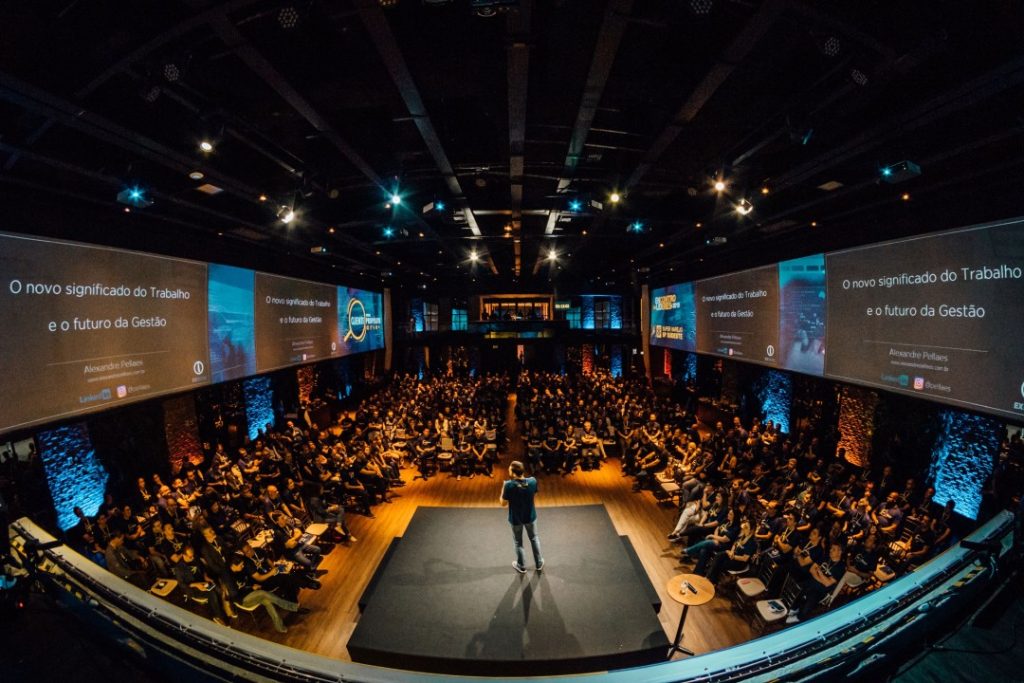
Event planning is a dynamic and challenging field that requires a unique blend of creativity, organization, and strategic thinking. As the industry evolves, event organizers face a myriad of obstacles that can complicate their efforts to deliver successful events. From managing diverse client expectations to navigating the complexities of macroeconomic factors, these challenges demand innovative solutions and adaptive strategies. In this article, we explore the top 5 challenges event organizers face today and offer practical advice on how to overcome them, ensuring smoother planning processes and more impactful events.
1. Managing Client Expectations
Challenge: Balancing diverse client expectations with practical constraints is a significant hurdle for event organizers. Clients often have ambitious visions for their events, which can sometimes be unrealistic given budgetary, logistical, or time constraints. Misalignments between client expectations and what is practically achievable can lead to frustration, dissatisfaction, and strained relationships. Additionally, clients may change their minds frequently or have difficulty articulating their exact needs, further complicating the planning process.
Solution: To effectively manage client expectations, it is crucial to establish clear and open communication channels from the very beginning. This involves actively listening to clients to fully understand their vision, priorities, and concerns. Organizers should provide professional insights and advice to help clients understand what is feasible within their given constraints. Setting realistic goals is an essential part of this process. This can be achieved by discussing budget limitations, logistical capabilities, and timelines upfront, ensuring that clients have a clear understanding of what can be accomplished.
Transparency is another key element in managing expectations. This can be maintained by providing clients with detailed proposals that outline every aspect of the event, including costs, schedules, and potential challenges. Regular updates and progress reports are vital to keep clients informed and involved in the planning process. These updates should highlight any changes, new developments, or issues that arise, along with proposed solutions.
Using project management tools can also enhance transparency and communication. These tools allow both the event organizer and the client to track progress, view timelines, and share documents, ensuring everyone is on the same page.
Moreover, setting up regular meetings or check-ins can provide opportunities to address any concerns, answer questions, and adjust plans as necessary. This continuous engagement helps build trust and ensures that the client’s vision remains aligned with the practical execution of the event.
2. Navigating Internal Stakeholder Influence
Challenge: Internal stakeholders often have varying priorities and opinions, which can complicate decision-making and event execution. Different departments or individuals within an organization may have distinct goals, preferences, and concerns regarding the event. These differing perspectives can lead to conflicts, delays, and a lack of cohesive direction if not managed properly.
Solution: To effectively navigate internal stakeholder influence, it is essential to engage stakeholders early in the planning process. This initial engagement helps to identify key players, understand their priorities, and establish a collaborative environment from the start.
Clearly defining roles and responsibilities is crucial to streamline decision-making and execution. By delineating who is responsible for what, you can minimize overlaps, avoid confusion, and ensure accountability. Assigning specific tasks and decision-making authority to appropriate stakeholders helps in managing expectations and reducing friction.
Using collaborative tools, such as project management software and shared platforms, can facilitate effective communication and coordination among stakeholders. These tools allow for transparent tracking of progress, easy sharing of information, and a centralized space for feedback and updates. This ensures that everyone’s input is considered and addressed in a structured manner.
Regular meetings and updates are vital to maintaining alignment and preventing conflicts. Scheduled check-ins provide opportunities to review progress, discuss any emerging issues, and make necessary adjustments. These meetings should be inclusive, allowing all relevant stakeholders to voice their opinions and concerns.
In addition, establishing a clear decision-making process can help manage conflicting priorities. This might involve setting up a steering committee or a designated decision-maker who can mediate and make final calls when disagreements arise.
Building strong relationships with stakeholders through ongoing communication and collaboration fosters a sense of shared purpose and commitment to the event’s success. It’s important to listen to stakeholders’ feedback, acknowledge their contributions, and show how their input is being implemented.
3. Underutilization of Event Data
Challenge: Many organizations fail to leverage the wealth of data generated from their events to improve future planning and execution. Event data can provide critical insights into attendee behavior, preferences, and engagement, yet it often remains underutilized. This missed opportunity can result in repeated mistakes, inefficient use of resources, and missed chances to enhance attendee experiences and increase ROI.
Solution: To address the underutilization of event data, organizations should implement robust data collection and analysis strategies. This process begins with identifying the key metrics that are relevant to the event’s goals. Metrics might include attendee demographics, registration numbers, session attendance, feedback ratings, engagement levels on social media, and more.
Effective data collection requires the use of integrated tools and platforms that can capture data from various touchpoints before, during, and after the event. This can include registration systems, mobile event apps, social media analytics, and feedback surveys. Ensuring these systems are integrated allows for a comprehensive view of the event data, making it easier to analyze and draw meaningful insights.
Once data is collected, employing data analytics tools and techniques is essential to interpret the information effectively. These tools can help identify trends, measure success against key performance indicators (KPIs), and uncover areas for improvement. Visualization tools can further aid in making the data accessible and understandable to all stakeholders.
The next step is to translate these insights into actionable strategies. For instance, understanding which sessions had the highest attendance and engagement can guide future content planning. Analyzing feedback can highlight aspects of the event that were well-received or need improvement. By applying these insights, organizations can tailor future events to better meet attendee needs and preferences.
Creating a culture of continuous improvement is crucial. Event organizers should establish a feedback loop where data from past events informs the planning and execution of future ones. Regularly reviewing and updating data collection and analysis practices ensures they remain aligned with evolving event goals and industry trends.
4. Impact of Macroeconomic Factors
Challenge: Economic fluctuations, inflation, and other macroeconomic factors can significantly affect event planning and execution. These external forces can impact budgets, attendance, sponsorships, and overall event feasibility. Uncertain economic conditions can lead to increased costs, reduced discretionary spending by potential attendees, and reluctance from sponsors to invest, all of which pose challenges for event organizers.
Solution: To mitigate the impact of macroeconomic factors, event organizers should develop flexible and resilient strategies that can adapt to changing economic conditions. One of the first steps is to create a flexible budget that can accommodate economic fluctuations. This involves setting aside contingency funds to cover unexpected costs and identifying areas where expenses can be scaled back if necessary. Regularly reviewing and adjusting the budget based on current economic trends helps ensure financial stability.
Implementing cost-saving measures without compromising the quality of the event is crucial. This might include negotiating better rates with vendors, opting for digital marketing over traditional advertising, or utilizing virtual and hybrid event formats to reduce physical costs. Leveraging technology can also streamline operations and reduce expenses.
Diversifying revenue streams can provide a buffer against economic downturns. Exploring various sponsorship models, such as in-kind contributions, revenue-sharing arrangements, and long-term partnerships, can provide financial stability. Offering tiered ticket pricing, early bird discounts, and value-added packages can attract a broader audience and increase ticket sales.
Maintaining strong relationships with sponsors is essential during uncertain economic times. Communicate the value proposition clearly and demonstrate how the event aligns with their business objectives. Offering flexible sponsorship packages and additional promotional opportunities can make the investment more attractive.
5. High Cost and Time Investment in Pitching
Challenge: The process of creating and presenting pitches to potential clients or sponsors can be both time-consuming and costly. Crafting customized proposals, conducting extensive research, and producing compelling presentations require significant resources. Additionally, the competitive nature of the industry often means that numerous pitches are necessary to secure a single event or sponsorship deal, amplifying the investment needed.
Solution: To reduce the cost and time investment in pitching, event organizers can adopt a range of strategies to streamline the process and increase efficiency. Creating standardized templates for proposals and presentations can save considerable time. These templates should be comprehensive yet flexible enough to be easily customized for different clients or events. Include sections for event objectives, target audience, proposed activities, budget estimates, and potential ROI. A well-designed template ensures consistency and professionalism while reducing the need to start from scratch for each pitch.
Utilizing digital tools and software can enhance the efficiency of the pitching process. Project management tools, customer relationship management (CRM) systems, and presentation software can help organize information, track client interactions, and create polished presentations quickly. Tools like Canva, Prezi, or PowerPoint templates can streamline the design process, allowing you to focus more on content rather than formatting.
Concentrate on clearly articulating your core value propositions. Highlight unique selling points and past successes that demonstrate your ability to deliver outstanding events. Tailoring the pitch to address the specific needs and pain points of the client or sponsor can make your proposal more compelling. Emphasize the benefits they will gain, such as increased brand visibility, engagement, or ROI.
Encourage collaboration within your team to leverage diverse skills and perspectives. Designating roles, such as content creators, researchers, and designers, can streamline the process and ensure that each pitch is comprehensive and polished. Regular brainstorming sessions and feedback loops can enhance the quality of proposals while distributing the workload.
Navigating the complex landscape of event planning requires a strategic approach to overcome the myriad challenges faced by organizers today. Managing client expectations, balancing internal stakeholder influence, utilizing event data effectively, mitigating the impact of macroeconomic factors, and streamlining the pitching process are all critical components for success. By implementing clear communication practices, leveraging data and technology, fostering collaboration, and maintaining flexibility, event organizers can not only tackle these challenges but also transform them into opportunities for innovation and growth. With these strategies in place, organizers can deliver exceptional events that meet the evolving needs and expectations of clients and attendees alike, ensuring a sustainable and thriving event industry.











